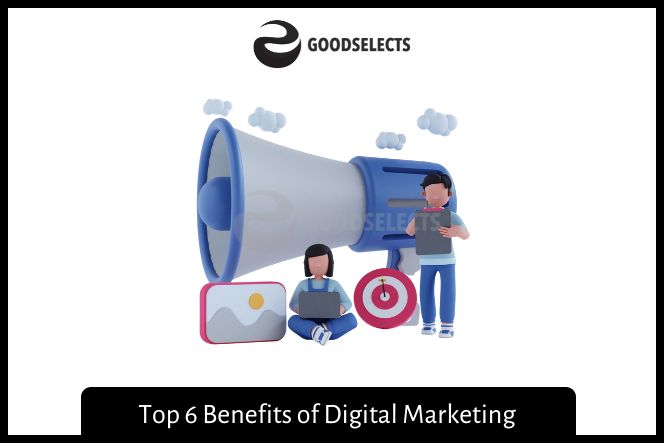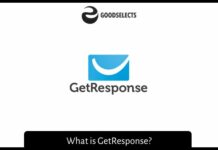Traditional marketing has limitations when it comes to scope and size. Print ads can only reach specific locations, markets, and times. With digital marketing, you can target an audience that matches your product or service, and you’ll only have limitations in your strategy and creativity. For example, the majority of buyers spend time on social media channels. As such, you can reach a much larger audience by optimizing your content. In addition, you can reach a wider audience, since most buyers are online.
Increased visibility
The increased visibility of your company is essential to building brand awareness. You can measure your brand’s visibility by monitoring non-channel metrics. Track how often your company name appears in search engines, whether you’re making news or just reading blogs. You can also use Google Alerts to be notified when certain keywords are mentioned in news articles, web pages or blogs. If these metrics increase over time, your marketing visibility is growing.
As your business grows, so does its visibility online. Your business will have the opportunity to collect customer satisfaction data and improve the user experience. Increased visibility also allows your current clients to influence future customers by posting good reviews and talking about you on social media. This is an invaluable form of social proof. In addition to existing customers, increased visibility will also help you attract new partners and investors. You will be able to attract more business if you rank highly on search engines.
With increased visibility, your business can tap into global audiences. The advent of digital marketing has democratized global access to even small companies. In addition to expanding their reach and maximizing profits, digital marketing helps local businesses increase their visibility. It also makes it easier for small businesses to reach audiences that were previously unreachable. Further, digital marketing enables businesses to respond to popular trends in real time and tap into consumer responses.
Cost-effectiveness
The cost-effectiveness of digital marketing can be considered one of the advantages of this type of marketing. It does not require a huge investment, yet can yield higher returns. Digital marketing allows businesses to reach a wider audience with fewer resources. Moreover, it can increase the percentage of quality leads. Moreover, consumers follow a specific buying cycle, which includes the stages of awareness, consideration, conversion, and retention.
Understanding the cost-effectiveness ratio is difficult without identifying the goals of the marketing campaign. A social media campaign can’t be evaluated for its cost-effectiveness unless the business knows its goal and how much it costs per click. Once the marketing goal is clearly defined, it’s time to calculate the cost per click, engagement, and conversions. Only then can the cost-effectiveness of social media campaigns be determined.
Social media networks, for example, are free to join. This is a highly effective digital marketing tool. Posts on popular sites increase brand awareness and help a business connect with a large audience. In addition, posting on these sites is more cost-effective than traditional forms of advertising. And because the content is free, social media marketing is a cost-effective method for attracting customers. It can also help in generating more leads than outbound marketing.
A business can also increase its profits through targeted traffic. Targeted traffic refers to web visitors who are actively searching for your products. This type of traffic has higher conversion rates than random web surfers. They are also more likely to ask questions or buy immediately. So, for a higher return on investment, targeted traffic is essential. So, how can you maximize its effectiveness? You must first understand what it means by targeted traffic.
Targeting
Targeting is a fundamental aspect of digital marketing and it enables you to tailor your campaigns to specific audiences. With digital marketing, you can define your audience through keywords and pay-per-click ads, or you can use demographic data from social media to narrow down your list of potential customers. Digital marketing helps you analyze changing customer behaviors and tailor your campaigns accordingly. You will know exactly which audience members are interested in your product or service, and how to make them feel at home with your brand or service.
Digital marketing is incredibly useful for businesses of all sizes. With so much scope and ability to target potential customers, it’s easier than ever to increase brand loyalty and drive online sales. Although there are many challenges of digital marketing, this method can bring tremendous benefits to businesses of all sizes. You can reach customers with a high level of precision, allowing you to reach them on every step of their buying journey.
Another benefit of digital marketing is that you can target consumers based on demographic information, such as age and gender. This allows you to reach more consumers with fewer ads and to maximize your marketing budget. In addition to targeting consumers based on demographics, digital marketing also allows you to target specific markets, which means your ads will be more relevant to your audience. Moreover, because consumers spend most of their time on social media and on the Internet, you can easily target them with your message.
In addition to the global reach of digital marketing, you can also improve your local presence, which is crucial for businesses that rely on customers close to home. Whether you’re trying to find more customers in your area, local targeting or local SEO, you can target your audience through the right keywords, increasing your conversion rates. It’s no secret that many consumers use the Internet to look for local businesses, so the more localized you can target your ads, the more potential customers you can reach.
In addition to targeting, you can also create multiple versions of the same campaign for different audiences. The difference between the two versions allows you to test which of two creatives works better for your target audience. A/B testing is another great advantage of digital marketing. A/B testing allows you to test different creatives on a small number of people and see which works best for your business. This way, you can make informed decisions and create successful campaigns.
Improved ROI
Using tools that allow you to measure the effectiveness of your marketing efforts will help you determine which ones are working the best. These tools include Google Analytics, HootSuite, Buzzsumo, and Mixpanel, to name a few. Of course, there is no such thing as a “one size fits all” solution when it comes to measuring ROI, but you can start by setting SMART goals and implementing them to your marketing campaigns.
If a previous campaign generated a 5:1 ROI, you can expect similar results from a new campaign with similar tactics and time frame. However, if your ROI goals are more ambitious, you may need to increase your budget or extend the time period. Using various tactics is an excellent way to maximize your ROI from digital marketing efforts. To improve ROI from digital marketing, you can try the following strategies. Using feedback and customer surveys to improve performance can yield a great ROI.
Customer lifetime value is another key metric to measure your ROI. Increasing customer lifetime value will give you a better picture of how much each customer spends over the course of their lifetime. Increasing average order value will increase your business’s revenue and decrease your costs, and will ultimately increase your ROI. While customer acquisition cost is important, this is only one metric of ROI. Another important metric to track is average order value, which tracks the amount a customer spends on each purchase.
Using KPIs is an essential part of improving ROI from digital marketing. Knowing what metrics matter most to your customers will allow you to adjust your campaign to generate positive results. By testing individual digital marketing campaigns, you can find new insights and create a more profitable overall strategy. Once you have found what works best for one campaign, you can apply it to the next campaign. The next time you make a marketing decision, remember to measure the ROI of each campaign separately.
Another way to measure ROI is by looking at your conversion rates on different channels and devices. If conversion rates are low on one device, you may need to rethink your campaign. Although mobile traffic is huge, many brands struggle to convert users. Using the right tools can help you see which activities lead to the highest ROI for your business. This way, you’ll be able to focus your efforts on areas that will yield the highest profits.




































